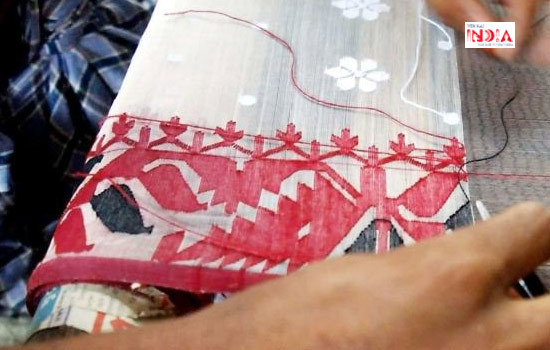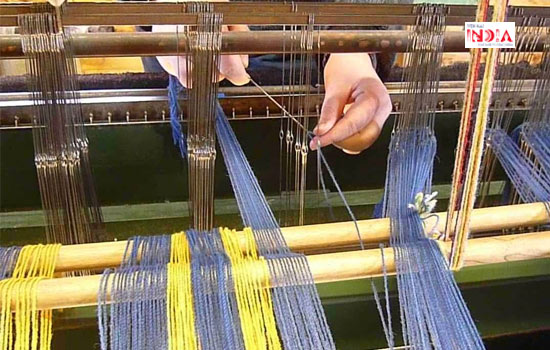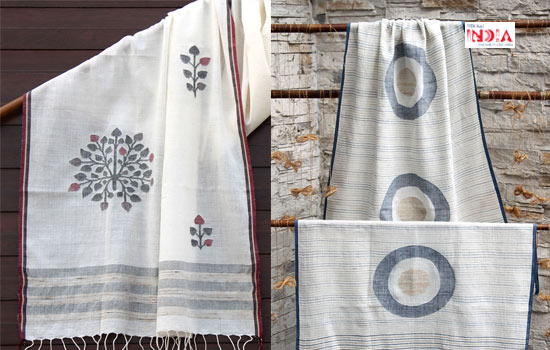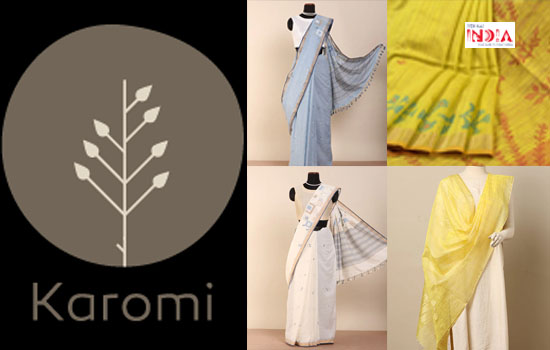Karomi, launched in 2007 is a startup company in the Indian handloom sector. It believes in the creation of the best and inexperienced aesthetics. Over a hundred urban and rural artisans across Bengal work under Karomi to produce the magic it further sells in the market. So, let’s know about their beautiful journey.
Know about Karomi’s Founders

The Creative Head and founder of Karomi, Sarita is a graduate from the Faculty of Fine Arts, M.S. University, Baroda and a postgraduate in Textile Design and Development from NIFT, Delhi. After completing her masters in 1998, and working in the field for over 8 years, Sarita set up Karomi in 2007.
“Tradition is what inspires us and the challenge is to always present it in a contemporary context.”Sarita Ganeriwala, Karomi
Apart from Sarita, the other person worth mentioning is Sarika Ginodia, who brought a wide range of experiences from financial to Supply Chain management in Karomi. She has a primary role in the success of Karomi.
The Beginning of Karomi
So, The distance between the weaving town and the primary city was around 250 kms. Following a while of connecting, they had connected with a solitary weaver to investigate different weaving strategies on the loom.
Tragically, the weaver was not just unconscious of the genuine capability of his own loom yet additionally tired of venturing out of his usual range of familiarity of “plain weave”.
In any case, predictable difficult work, tolerance, and diligence won the day. Perfectly quoted by a wise person, “Hard work is the key to success.” The transition went on from the same weaver working and creating beautiful pieces which left him stunned. Maybe it was his ability to go on and work hard with full determination.
Recommended Story – Handicrafts in India – Checkout the variety and craftsmanship
The Unique Factor – Karomi

Utilizing the conventional pit-loom strategy for weaving, their strength lies in utilizing the deep-rooted procedure of “Jamdani” weave (an additional weft weaving style special to Bengal), that bids to the discerning.
Emphatically established in the textile conventions of the country, Karomi consistently weaves the old and new, shadings and compositions, procedure, and innovation. The mission is to connect exemplary and contemporary to make the best concept handlooms.
Moreover, Karomi works with natural fibers like cotton, silk, cloth, and fleece. The yarns are consistently hand-dyed, every so often with natural dyes. The organization also works with Kantha embroidery and hand-block printing.
The Procedure
1) Dyeing

Yarns (in hanks) are hand-colored by the nearby dyers. Better the yarn, the more troublesome its coloring. The yarn needs cautious taking care of as consistent water treatment diminishes its solidarity.
2) Reeling
Reeling of colored yarns into spools is finished by hand on the “charkhas” or turning wheels. For handspun cotton, the dyed thread is fortified and mollified by absorbing for the time being an answer of rice water starch, permitting the ladies to wind it all the more effectively onto bobbins.
Moreover, It is dreary work done promptly toward the beginning of the day, for the most part somewhere in the range of 4 and 9, preceding the expanding heat dries the thread, making it more hard to deal with.
3) Warping/Drumming
The wound bobbins are shipped off to another worker who readies the warp on a beam. Warp yarns are spread out on an enormous wooden wheel-like construction called a “drum or bar” according to the predefined warping design.
4) Healding

Then after drumming, the threading of yarns is done through needle-like healds and afterward went through the reed (a brush like design to beat the weft set up at the hour of weaving).
Moreover, Healding is done promptly toward the beginning of the day, in brilliant light. It’s a drawn-out cycle and needs a great deal of accuracy.
5) Weaving

The fabric is woven utilizing the fly shuttle in conventional pit looms. Weaving a jamdani involves expertise and patience. So, when it is finished utilizing fine yarn, it requires significantly more perseverance from the weaver.
Also, The yarn tends to break if a lot of solidarity is applied or entrap if the pressure isn’t simply right. Hence, weaving is moderate and tedious.
Recommended Story – Ivory Handicrafts in India
6) Finishing

Subsequent to weaving, the closures in each piece are hitched and periphery wrapped up. At that point the piece is washed to eliminate all hints of gum/starch. Finally, it’s then neatly ironed and Voila, ready.
Karomi’s Exquisite Collections
Here are some of Karomi’s collections. You will definitely love it.
1) ROOH

The term Jamdani is Persian gotten from ‘Jam’, which means flower, and ‘Dani’, a jar or a container. Rooh is a modern-day celebration of this customary fine art. Mind boggling yet strong, deep, and lively.
The detailed idea of these flower designs requests exceptionally talented hands to decipher Jamdani weave onto fabric. Each piece is a work of adoration, setting aside an unnecessarily long effort to weave. Contingent upon how multifaceted the example is, it could take a weaver between 15 to 45 days to make one saree. Surprising isn’t it?
2) KHADDAR

Khaddar delivers the multifaceted prospects of a ‘desi’ yarn, handspun cotton, established in the ethos of India’s weaving convention. Each piece is recognized by Jamdani weave. No standard Jamdani, the workmanship is flawless with the rear of the item comparable to the front.
3) LAKIR

As the name recommends this assortment is about the consistently present unassuming “line”. Lakir gives this modest line both character and person. Sometimes delicate, or at times bold.
Awards and Recognition

In acknowledgment of quality and innovation in handloom weaving, Karomi bagged the UNESCO Award of Excellence for Handiworks – Jamdani stoles in 2012 and 2014.
Hear it from Karomi itself!
We’re focused on pushing the handloom sector forward with an emphasis on design innovation. With the number of talented weavers lessening in number, the test isn’t only to deliver quality textures yet to help keep the art alive.
Moreover, We’re here to impart in the weaver a feeling of pride for his specialty. Our loyalty is to textiles, to craft, and most importantly, to the craftsperson.
“We work for that day when the word ‘handloom’ connotes neither cheap..nor imperfect…nor does it bring to mind visions of poor artisans with underfed children. We look forward to that day when ‘hand-loom is associated with pride and joy…and rightfully acknowledged as the very backbone of our culture and heritage.”Karomi
Also Read – Top 10 Online Handicrafts Stores In India










